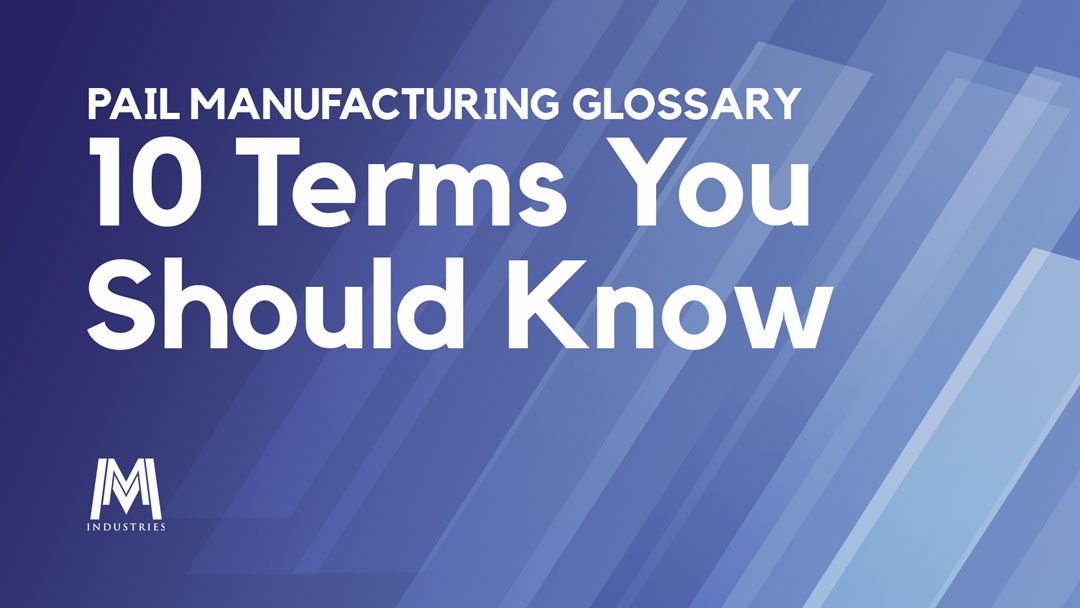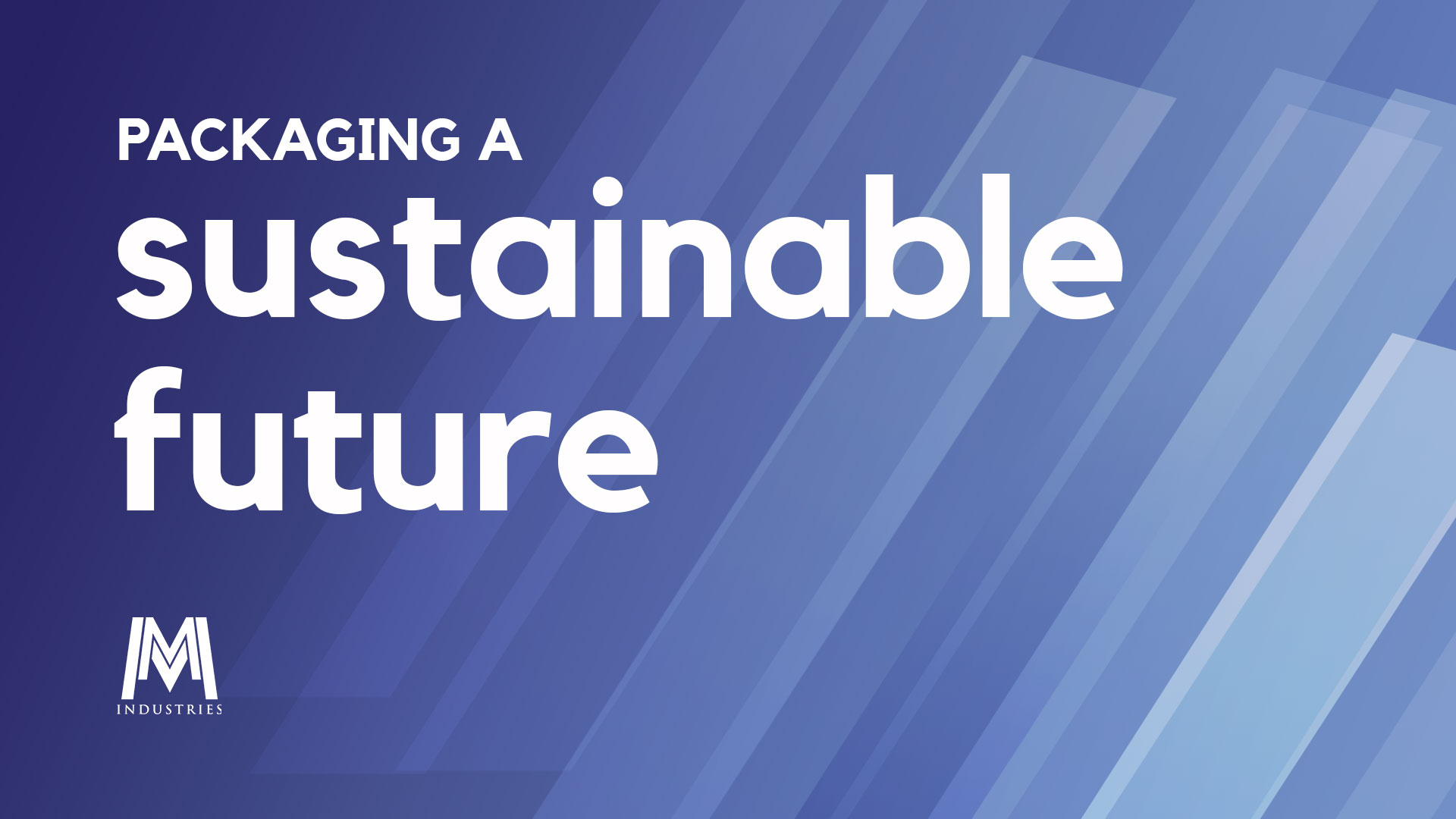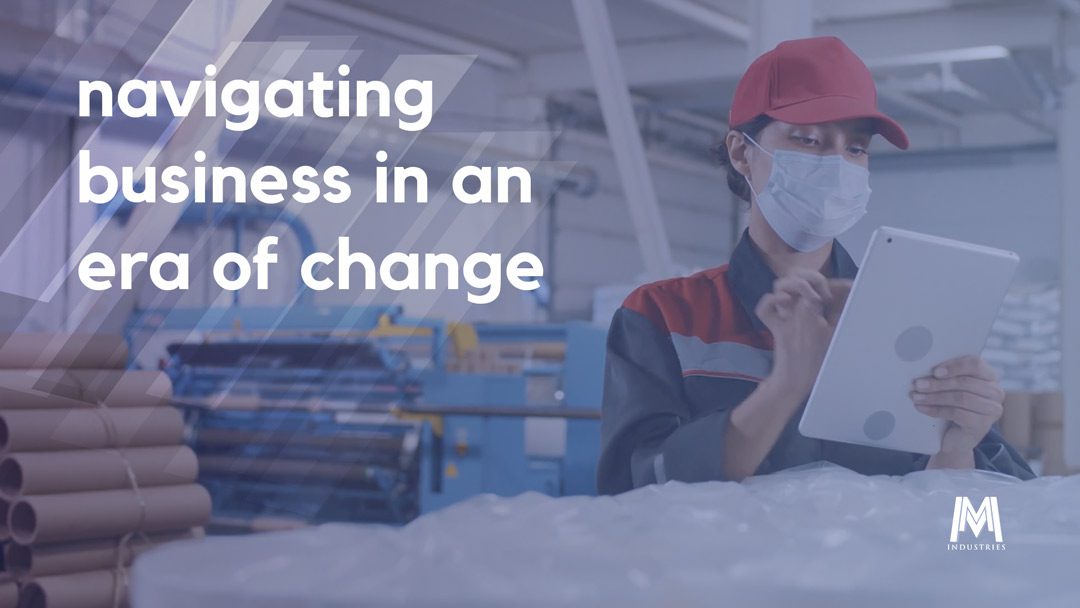Every industry has its own unique terminology and the plastic pail industry is no different.
For nearly 40 years and counting, our team has remained committed to pioneering and delivering imaginative packaging solutions driven by our passion to serve.
Just as the execution of our processes is important, so too is our ability to clearly and effectively communicate with our clients. When working with our team at M&M Industries, we make it a point to dot every “i” and cross every “t” to ensure all parties involved are on the same page and moving toward the same goals.
That’s why we leverage our expertise and experience to help educate everyone from a novice to an expert on the ins and outs of our industry.
When you work with us, you can think of our team as a go-to educational resource that’ll answer any questions and provide clarity on any terms that may cause confusion.
This quick list of the most common terms used in the pail manufacturing industry is meant to serve as a starting point.
- Child-resistant – A type of closure that’s difficult for children under the age of five years old to open on their own and requires the assistance of an adult. A child-resistant closure is in place to prevent accidental consumption of hazardous substances and pharmaceutical products.
- Heat transfer printing – A heat transfer machine heats up the plastic pail which then transfers the label onto the pail.
- High-Density Polyethylene (HDPE) – A strong material that’s appropriate for water-based chemicals but isn’t suggested for packing solvent-based or petroleum products.
- IML decoration – IML stands for “in-mold labeling.” The term is directly taken from the technique which is a reprinted polypropylene label placed in a mold that’s in the shape of the final product. The molten polypropylene is then added to the mold and fused with the label while curing to take the shape of the mold.
- Injection molding – A manufacturing process in which melted or liquified plastic is sent into a cooled mold cavity to form the desired shape of a pail.
- Offset printing – A technique that transfers an inked image from a plate to a rubber blanket and then to the surface of the object. The name “offset printing” comes from the fact the ink isn’t transferred directly onto the surface. It’s an efficient technique that’s great for larger quantities as it provides a professional result.
- Polypropylene – A type of thermoplastic polymer that’s used in a variety of applications including plastic pail packaging. Polypropylene is made through chain-growth polymerization from the monomer propylene. It’s one of the most commonly used thermoplastics in the world.
- Post-consumer recycled content (PCR) – Material made from items that consumers commonly recycle including aluminum, cardboard, paper, and plastic bottles. Our Regenesis process uses PCR to create the core of five-gallon pails.
- Tamper-evident hinged and screw-off covers – These covers are designed to reveal if the product has been interfered with. This type of cover is closed with a seal that makes it easy to spot if the pail has been tampered with before opening.
- Virgin material – The basic form of material that’s never been used or processed.
If you have a great idea, a design problem, or a specific packaging need, M&M can help. Contact us at sales@mmcontainer.com or call 1-800-331-5305 to learn more.





